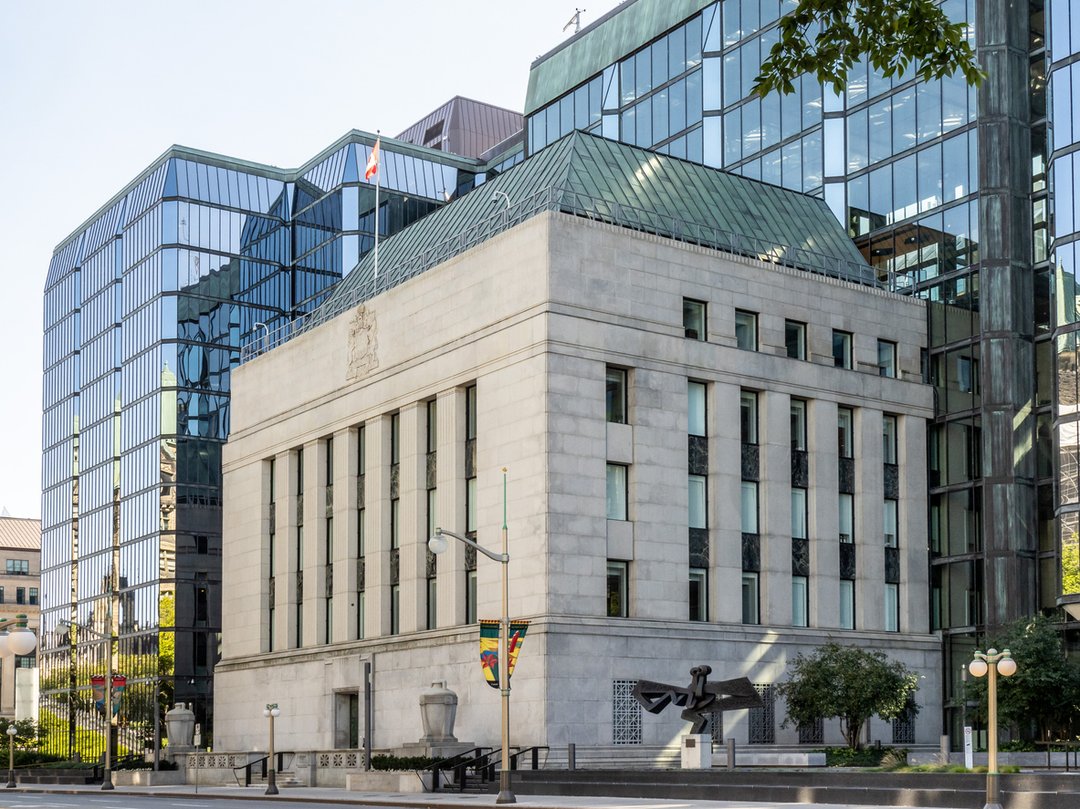
Mark Rendell
March 22, 2024
Bank of Canada officials believe it will be appropriate to cut interest rates this year if the economy develops as expected, although there is disagreement among members of the governing council on the likely timeline.
That’s according to a summary of discussions that took place ahead of the March 6 rate decision, where bank officials held the policy rate at 5 per cent for the fifth consecutive time.

iStock-1277375300 (2)
Governor Tiff Macklem and his deputies remain wary of lowering borrowing costs too soon, especially with the spring housing market heating up, the summary showed. But with inflation inching back toward 2 per cent, the country’s central bankers are now openly discussing the timing of rate cuts – albeit with reservations.
“Members agreed that if the economy evolves in line with the Bank’s projection, the conditions for rate cuts should materialize over the course of this year,” said the document, published Wednesday.
“However, there was some diversity of views among Governing Council members about when there would likely be enough evidence that these conditions were in place, and how to weight the risks to the outlook.”
The case for cutting interest rates sooner rather than later was bolstered on Tuesday, when Statistics Canada reported a surprising drop in inflation. Annual Consumer Price Index inflation fell to 2.8 per cent in February, down from 2.9 per cent in January. These are the first back-to-back months where inflation has been within the Bank of Canada’s target range of 1 per cent to 3 per cent since early 2021.
After that data, Bay Street analysts increased their bets that the central bank will begin lowering interest rates in June, although some say an earlier cut in April or a later cut in July are possible. Financial markets put the odds of a June rate cut at around 60 per cent, according to Refinitiv data.
The Bank of Canada’s hints about the path of monetary policy were echoed by the U.S. Federal Reserve on Wednesday. While leaving its benchmark rate unchanged, the Fed published a new “dot-plot,” which showed committee members expect three rate cuts in 2024.
Markets took this as a dovish signal, as many analysts had expected Fed policy makers to dial back their rate-cut projections in light of the unexpected strength of the U.S. economy.
In some ways, the Bank of Canada’s meeting summary was stale by the time it was published Wednesday, given the new inflation data. But it does contain important insights into how Canadian central bankers are thinking about the housing market, underlying inflation and wage pressures.
The document highlighted a particular concern about a pickup in real estate prices, with would-be buyers rushing back into the market in anticipation of rate cuts.
“If the housing sector rebounds in the spring, shelter-price inflation could be pushed up, delaying the return of CPI inflation to the 2-per-cent target,” the summary said. “If inflation proves more persistent than expected, monetary policy would likely need to remain restrictive for longer.”
Today, shelter inflation is the biggest driver of overall CPI inflation, and a particular challenge for the central bank.
To a significant extent, shelter inflation is tied to rising mortgage interest costs, which are the direct result of the bank’s past interest-rate hikes. Bank officials have also said that rising rents stem from an imbalance between housing supply and population growth that can’t be fixed by changing interest rates.
That has led some analysts to suggest that the bank should look past shelter inflation when setting interest rates. However, there seems to be little appetite for this argument among policy makers, based on the summary of deliberations.
“Members of the Governing Council agreed that if mortgage interest costs were the only driver of the persistently high shelter inflation, they could look through them. However, that’s not the case at the moment,” Royce Mendes, head of macro strategy at Desjardins, wrote in a note to clients.
“In essence, officials seem to be warning Canadians that, if the housing market responds too aggressively to the prospect of rate cuts this spring, the timing of such monetary easing could be delayed.”
The bank’s meeting summary also showed that officials are taking an expansive view of “underlying inflation.”
For months, they’ve said that they want to see a sustained drop in underlying inflation before cutting rates, but it has never been wholly clear what metrics they are talking about.
The summary clarified that they are not just looking at CPI-trim and CPI-median, their two preferred measures of core inflation. They are also looking at measures like CPI excluding food and energy, as well as the breadth of inflation across the CPI basket. The February inflation data showed progress across these measures.
There are still upside risks to inflation. Alongside housing price pressures, public beliefs about near-term inflation remain elevated and wages continue to grow more quickly than central bankers think is compatible with 2-per-cent inflation.
But the summary did note “signs of easing wage pressures.” In particular, wage growth numbers in several recent Statscan publications have been notably lower than in the more widely followed Labour Force Survey.
The bank’s next interest-rate decision is on April 10.
This Globe and Mail article was legally licensed by AdvisorStream.
© Copyright 2024 The Globe and Mail Inc. All rights reserved.


